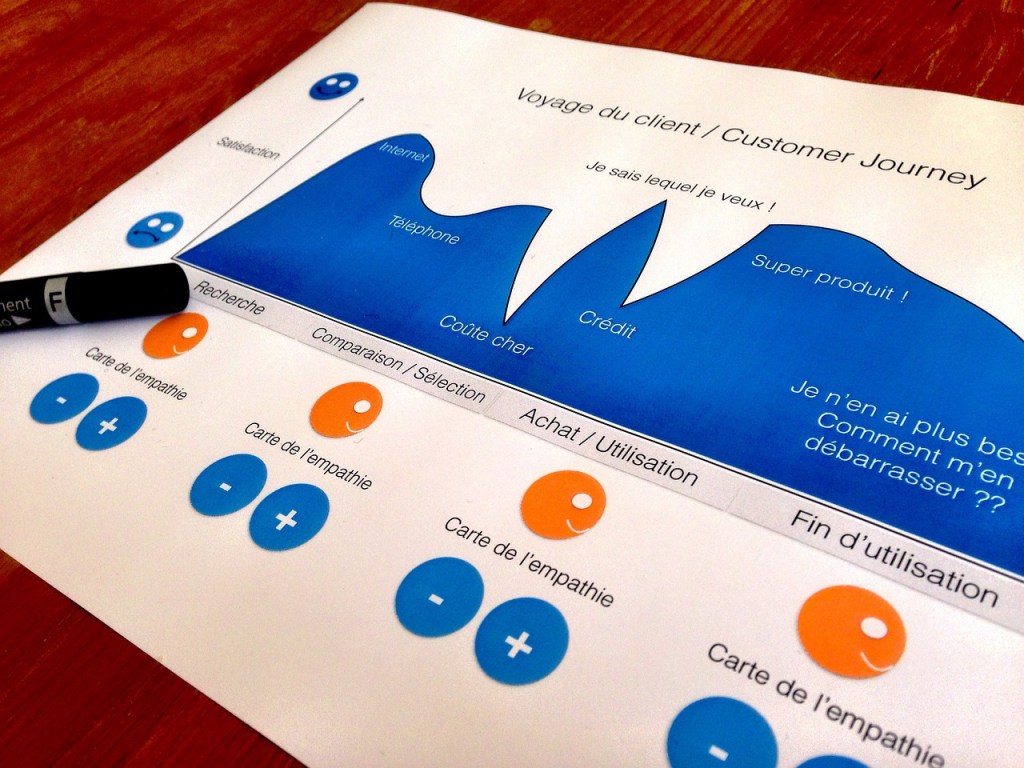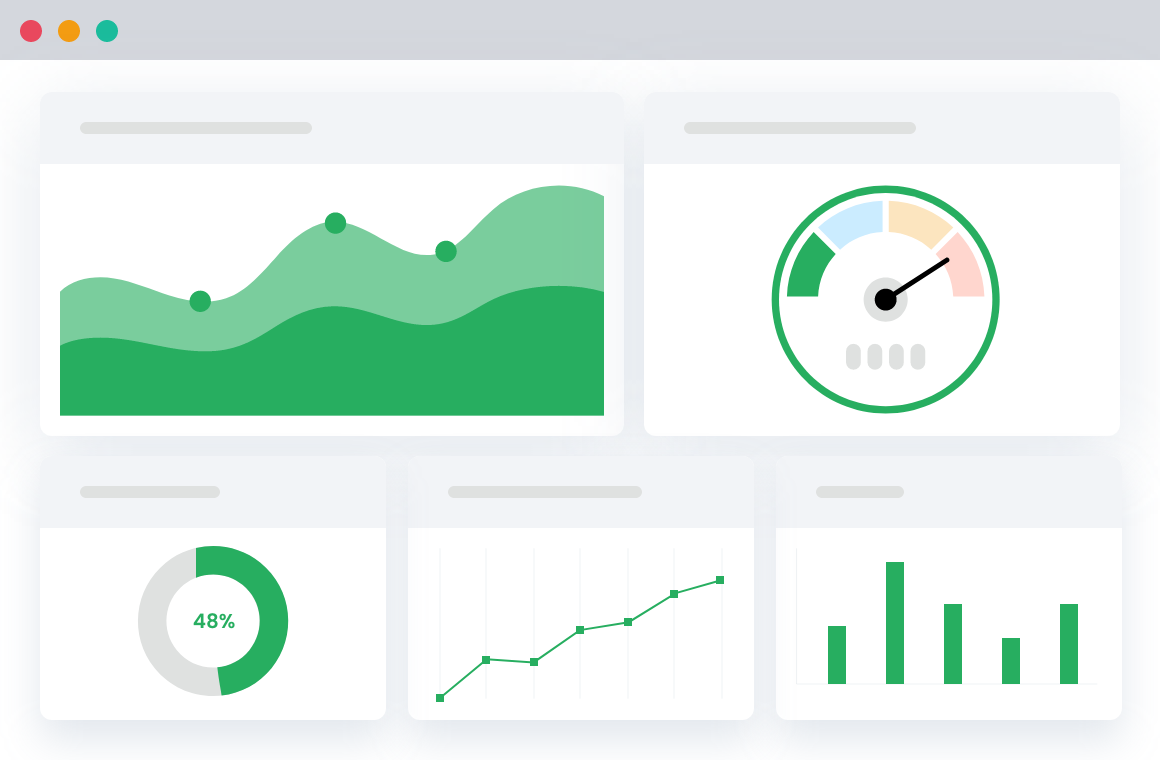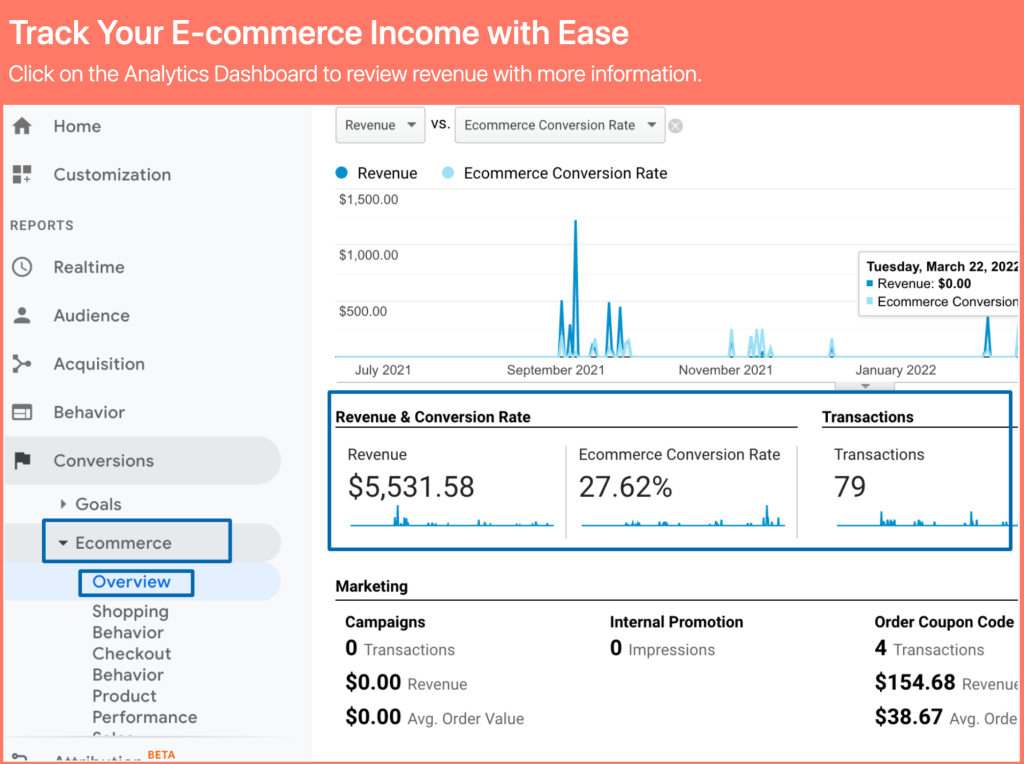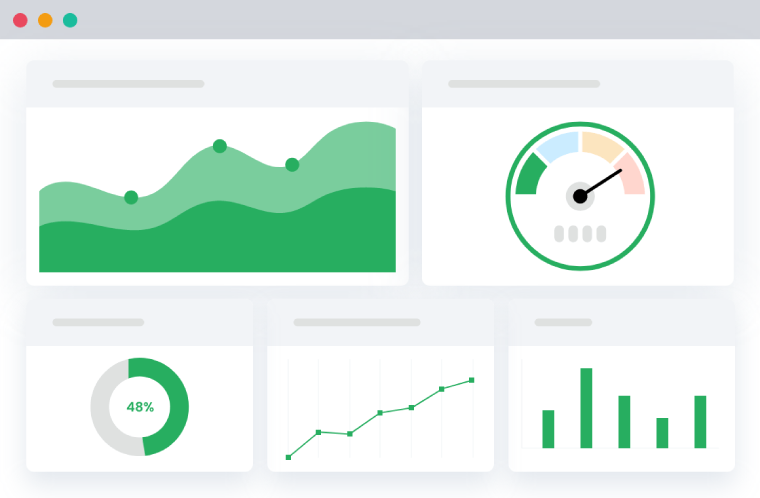Table of Contents
Picture this: a potential customer lands on your website, enticed by your offerings.
What happens next?
How do they navigate through your site? What prompts them to make a purchase decision, and how do they feel afterwards?
These questions represent the concept of concept of the customer journey—a comprehensive map delineating every touchpoint and interaction between a customer and a brand.
Mapping the twists and turns customers take – from first spotting a brand to their interactions after buying – can be like a treasure map for businesses to build strong connections and boost sales.
By understanding and addressing the specific needs of various customer segments, ecommerce businesses can enhance customer satisfaction and loyalty, and, ultimately, drive growth and profitability. It requires careful analysis, strategic planning, and continuous optimization to ensure that each customer’s journey is personalized and optimized for maximum impact.
This guide dives into the world of customer journey mapping, uncovering its complexities and exploring a path towards delivering unbeatable customer experiences that help build a business that stands the test of time.
The stages of the customer journey
The customer journey in WooCommerce encompasses several critical stages, each with its own set of opportunities and challenges.
Catering to diverse customer groups is a significant hurdle for eCommerce professionals looking to map their customers’ journeys. Each group possesses unique preferences, behaviors, and expectations, which means you’ll need to take a tailored approach for each segment. Trying to juggle all these different strategies at once can be tough, but if you get it right, there’s a world of potential for your business to thrive.

Let’s break down these stages of the customer journey and explore the best practices to optimize customer experience and conversion rates:
- Awareness: At this point, customers start discovering your brand or products – usually through social media, search engines, or word of mouth. To get the most exposure and connect with more people, concentrate on specific marketing strategies across these platforms. Utilize engaging content, eye-catching visuals, and compelling messaging to capture attention and generate interest in your offerings.
- Consideration: During the consideration stage, customers start thinking about whether your products could solve their problems. They dive into content, reviews, and product descriptions to weigh up their options. This is when they also compare your products with others on the market. To win them over, give them all the details they need about your products, along with real reviews from customers, and clear pricing. You might even want to include comparison charts on your website or offer price matching to ensure your brand stands out.
- Acquisition: When customers are ready to buy, it’s super important to make it easy for them to complete their purchase without any hiccups, optimizing the checkout process. That means providing clear info about your products, showing prices upfront, and offering easy payment options. Features like guest checkout, one-click buying, and saving payment info can all make it quicker and easier for customers to make a purchase, which means more sales for you!
- Retention: After a purchase, it’s really important to keep in touch with your customers to make sure they’re happy and to keep them coming back. Send them a thank-you email to show your appreciation, and ask them how their experience was with a quick survey. Make sure they know you’re there to help if they need anything. You can also set up loyalty programs or offer incentives to encourage them to shop with you again. Building these long-term relationships is key to keeping your customers happy and loyal.
- Loyalty: To keep customers coming back, you need to make them feel special. Send them personalized messages and exclusive deals based on what they’ve bought before. Show them you appreciate their loyalty by giving them discounts, rewards, or even sneak peeks at new products and services. Get them involved in loyalty programs and keep them engaged across different channels. Making them feel valued and offering them perks for sticking around will keep them coming back for more.
- Advocacy: Satisfied customers are likely to share their positive experiences with others through word of mouth, reviews, and social media. Encourage and incentivize this advocacy through referral programs that reward customers for bringing in new business. Leverage user-generated content and testimonials to add authenticity to your marketing efforts and showcase the real-life benefits of your products or services.
By understanding and optimizing each stage of the customer journey in WooCommerce, you can create a seamless and engaging experience that drives conversions, fosters loyalty, and cultivates brand advocacy.
A step-by-step guide to customer journey mapping
Customer journey mapping is a powerful tool that allows businesses to understand and improve the experiences of their customers as they interact with the brand across various touchpoints. By delving into the intricacies of customer interactions, needs, and emotions, businesses can create a roadmap for enhancing customer satisfaction and driving conversions.
Here’s a comprehensive step-by-step guide to help you navigate through the process of customer journey mapping:
Research Stage:
During this crucial phase, you’ll dive deep into understanding your customers and their interactions with your brand. Here’s what you need to focus on:
1. Customer Segments:
- Understand your Audience: Start by gaining insights into the various types of customers who interact with your brand. Analyze their demographics, interests, and needs to identify different customer segments.
- Segmentation Criteria: Determine the criteria for segmenting your audience, such as age, location, or purchasing behavior. This segmentation will help tailor your marketing efforts and customer experiences to specific groups.
2. Touchpoints:
- Catalog Interaction Points: Document every possible touchpoint where customers engage with your brand, ranging from social media platforms to customer service calls.
- Channel Preference: Note which channels your customers prefer and how they use them in their buying journey. Understanding these preferences will help you prioritize and optimize touchpoints effectively.
3. Customer Needs and Goals:
- Understanding Objectives: Gain insights into what customers are trying to achieve at each stage of their journey, whether it’s raising awareness about your brand, considering a purchase, or seeking post-purchase support.
- Identify Pain Points: Identify any frustrations or obstacles customers face that might deter their journey. Addressing these pain points is crucial for improving the overall customer experience.
4. Customer Behavior:
- Analyzing Paths: Examine the paths customers take from initial discovery to purchase and beyond. Understanding these pathways will help you optimize the customer journey and identify opportunities for engagement.
- Content and Product Engagement: Analyze how customers engage with your content, products, and services. Metrics such as time spent on site and open rates can provide valuable insights into customer behavior.
5. Decision-making Process:
- Influence Factors: Understand the information or factors that influence the customer’s decision to purchase. This may include product features, pricing, reviews, or brand reputation.
- Competitive Analysis: Identify how and why customers compare your offerings with competitors. This insight will help you differentiate your brand and tailor your messaging accordingly.
6. Feedback and Satisfaction:
- Customer Feedback: Gather feedback through surveys, reviews, and direct interactions to gauge customer satisfaction. Pay close attention to sentiment and recurring themes to identify areas for improvement.
- Post-Purchase Experience: Evaluate the post-purchase experience, including support quality, product satisfaction, and the effectiveness of loyalty programs. Positive post-purchase experiences are crucial for fostering customer loyalty and advocacy.
7. Barriers to Conversion:
- Identify Obstacles: Understand what prevents prospects from converting into customers. Common barriers may include complex checkout processes, high shipping costs, or lack of trust in the brand.
- Improvement Opportunities: Look for areas where the customer experience can be improved to facilitate conversion. Addressing these barriers can help increase conversion rates and drive business growth.
8. Journey Mapping Tools:
- Data Utilization: Utilize data from Google Analytics for WooCommerce, CRM systems, and customer feedback tools to inform your journey map. These insights will provide a solid foundation for understanding customer behavior and preferences. Consider using specialized software or even simple diagrams to visually map out the customer journey. Visualization tools can help you identify patterns, gaps, and opportunities for optimization more effectively.
In the research phase of customer journey mapping, leveraging tools like Enhanced Ecommerce Google Analytics for WooCommerce (EEGAW) can significantly enhance your understanding of audience behavior and optimize their journey effectively. This plugin can help enhance your online store’s performance through comprehensive journey tracking, providing insights into every customer interaction from product views to conversions. It provides detailed analytics to pinpoint areas for improvement, optimizing the overall customer experience.
Review Stage:
During the review stage, businesses thoroughly examine the data gathered in the research phase to develop targeted strategies that facilitate customers’ progression through each stage of the customer journey. Here’s a detailed expansion on how to leverage research insights to encourage audience members to transition smoothly through the journey:
1. Analyze Research Data:
- Dive deep into the data collected during the research phase, including customer behavior, preferences, and pain points at each stage of the journey.
- Identify patterns, trends, and areas where customers may encounter obstacles or drop-off points in their journey progression.
2. Tailor Communication Strategies:
- Utilize personalized communication methods, such as email marketing or targeted advertisements, to engage customers at different stages of their journey.
- Consider incorporating incentives like coupons or special offers in follow-up emails to encourage customers who have recently made a purchase to transition from the “Retention” phase to the “Loyalty” phase.
3. Segment Audience for Targeted Offers:
- Utilize segmentation criteria derived from research findings to categorize your audience into distinct groups with unique characteristics, preferences, and purchasing behaviors.
- Customize coupon offers based on audience segmentation, ensuring that each group receives promotions tailored to their specific needs and interests.
4. Design Relevant Coupons and experiment with coupon strategies:
- Design coupons or promotions that align with the preferences and motivations identified in the research phase.
- Consider factors such as discount percentages, product exclusions, and expiration dates to ensure that coupons are appealing and relevant to each audience segment.
- Experiment with different coupon strategies to determine which ones resonate most effectively with your audience and drive desired outcomes.
- Test variables such as coupon value, redemption requirements, and promotion duration to optimize effectiveness and maximize ROI.
5. Monitor Performance Metrics:
- Continuously monitor performance metrics, such as coupon redemption rates, conversion rates, and customer engagement, to assess the effectiveness of your coupon initiatives.
- Use data analytics tools to track the impact of coupons on customer behavior and journey progression, making data-driven decisions to refine your strategies.
6. Solicit Customer Feedback:
- Seek feedback from customers through surveys, reviews, or direct interactions to gain insights into their perceptions of coupon offers and their impact on the overall customer experience.
- Use customer feedback to identify areas for improvement and make adjustments to coupon strategies accordingly, ensuring that they align with customer preferences and expectations.
Implementation:
Now that you’ve reviewed the research findings and devised targeted strategies, it’s time to implement changes to your website, social media channels, or sales process to better meet your customers at every stage of their journey. Here’s how you can effectively implement these changes:
- Website Optimization: Improve navigation and user experience to ensure seamless customer journey progression. Optimize landing, product pages, and checkout processes for increased conversions. Incorporate personalized content based on customer preferences.
- Social Media Engagement: Boost engagement on social platforms by sharing relevant content and promotions. Respond promptly to customer inquiries and feedback to foster trust. Utilize targeted social media advertising for tailored messages.
- Sales Process Enhancement: Streamline sales processes for easier customer purchases. Offer diverse payment options and implement secure checkout. Utilize CRM to track interactions and personalize communication.
- A/B Testing: Conduct A/B testing to experiment with website layouts and messaging. Test changes in real-time and analyze performance metrics for optimization.
- Continuous Monitoring and Iteration: Track website analytics, social media engagement, and sales performance for impact assessment. Use customer feedback and data insights for ongoing refinement of strategies.
- Training and Education: Provide team training for exceptional customer service and support. Empower employees to proactively address inquiries and provide personalized recommendations.
Testing:
A/B testing, also known as split testing, is a powerful method used by businesses to compare two or more versions of a webpage, email, or advertisement to determine which one performs better.
Businesses can employ various testing methods such as A/B testing to identify effective elements in their customer journey. This includes experimenting with website layout, navigation paths, and call-to-action buttons to ensure smoother progression through the journey. It’s important to only change one element of a given marketing approach at a time when A/B testing: Otherwise, you run the risk of confounding your results, making it impossible to tell which change made an impact. By analyzing quantitative data such as click-through rates and conversion rates, insights into customer behavior, needs, and pain points can be gained.
Experimenting with messaging and offers further aids in understanding customer preferences, allowing businesses to tailor their offerings and communication strategies accordingly. A/B testing also plays a crucial role in optimizing Ecommerece platforms, informing marketing strategies, and facilitating continuous refinement of the customer journey based on data-driven insights.
Taking a data-driven approach to conceptualizing the customer journey
When it comes to conceptualizing and mapping the customer journey, a data-driven approach is paramount. Enhanced Ecommerce Google Analytics for WooCommerce (EEGAW) stands out as a powerful tool in this effort, offering robust tracking and analytics capabilities that provide invaluable insights into customer behavior.
Enhanced Ecommerce Tracking
Leverage the power of analytics to boost your store’s performance and maximize profits.
14-day, no-questions-asked money-back guarantee.

Consider the scenario where EEGAW reveals that a product page is losing customers due to a cumbersome checkout process. Armed with this insight, businesses can streamline the checkout process, resulting in higher conversion rates and increased revenues. And in similar situations, EEGAW’s data-driven approach can prove to be one of the greatest tools to help boost conversions through online store optimization and revenue growth.
- Comprehensive Journey Tracking: Dive deep into your customer’s journey by tracking every step, from product impressions to conversions. Gain invaluable insights into their behavior, preferences, and interactions with your online store.
- Optimize Performance: Armed with detailed analytics, you can optimize your online store’s performance like never before. Identify strengths, weaknesses, and opportunities for improvement to enhance the overall customer experience.
- Custom Dimensions and Metrics: Tailor your tracking to your specific needs with custom dimensions and metrics. Capture additional information about your products, customers, and transactions to gain a deeper understanding of your audience.
- Segmentation for Deeper Analysis: Segment your data for more granular analysis, allowing you to uncover hidden patterns and trends. These insights can fuel your marketing and sales strategies, driving targeted campaigns and maximizing ROI.
- Dynamic Remarketing: Leverage dynamic remarketing to re-engage customers who have interacted with your products but haven’t made a purchase. Personalized ads ensure top-of-mind recall, boosting conversion rates and revenue.
This data-driven approach directly translates into tangible benefits, such as increased conversions and revenues. By addressing deficiencies in the customer journey identified through EEGAW’s analytics, businesses can enhance the overall user experience, leading to higher engagement and conversion rates. Moreover, by continuously monitoring and analyzing customer behavior, businesses can adapt their strategies in real-time, ensuring they remain agile and responsive to evolving consumer preferences.
Advanced Ecommerce Google Analytics for WooCommerce: Your Strategic Advantage
EEGAW is a powerful tool, instrumental in mapping the customer journey in ecommerce, offering detailed tracking capabilities that provide invaluable insights for optimizing your online store. This tool provides comprehensive ecommerce tracking, meticulously capturing every step of the customer’s journey. From initial product impressions and clicks to the pivotal moments of adding items to carts, checkout, and final purchase, EEGAW offers unparalleled insight into customer behavior.
By offering a detailed overview of the customer’s journey, EEGAW empowers businesses to make data-driven decisions and optimize their online stores effectively. With EEGAW, businesses gain the ability to understand customer interactions at a granular level, facilitating targeted optimizations that drive increased conversions and revenues.
Custom Dimensions and Metrics: Tailoring Your Analytics for Precision
Let’s take a look at the transformative capabilities of custom dimensions and tracking metrics within EEGAW, enriching the landscape of ecommerce analytics. We should begin with a primer on dimensions and metrics in the context of Google Analytics 4:
- Dimensions represent qualitative data attributes such as “City: New York”.
- Metrics signify quantitative data attributes like “Sessions: 100”.
Custom dimensions and metrics afford businesses the opportunity to tailor their analytics precisely to their unique requirements, capturing the exact data that aligns with their objectives.
It’s easy to set up custom dimensions and metrics within EEGAW, allowing businesses to delve deeper into product performance, customer behavior, and transaction history. For instance, businesses may choose to track the elapsed time between each step of the user journey to identify pain points and optimize the process accordingly. Additionally, custom tracking can extend to specific customer segments, product categories, or marketing campaigns, providing nuanced insights that drive targeted marketing and sales strategies.
Consider a scenario where an ecommerce business wishes to track user engagement with a newly-launched product line. By implementing custom dimensions to capture user interactions such as product views, clicks, and conversions, businesses gain invaluable insights into the effectiveness of their marketing efforts and product presentation. This level of granularity enables businesses to refine their strategies iteratively, ultimately enhancing the user experience and driving higher conversion rates.
Remarketing Campaigns: Smart Engagement at Every Stage
You know how sometimes you visit a website, browse around, but then leave without making a purchase? It happens to all of us. Remarketing is the secret sauce that brings those potential customers back into the fold. But let’s face it, not all remarketing strategies are created equal. Some fall short, missing out on valuable sales opportunities and leaving businesses scratching their heads.
That’s where Enhanced Ecommerce Google Analytics for WooCommerce (EEGAW) comes in. This game-changer revolutionizes remarketing with its advanced features that leave traditional methods in the dust. With EEGAW, businesses can supercharge their remarketing efforts, driving higher conversions and getting more bang for their buck.
EEGAW seamlessly integrates with Google Ads, enabling businesses to create dynamic remarketing campaigns that target users with personalized ads based on their past interactions with the ecommerce store. By leveraging EEGAW’s advanced tracking capabilities, businesses can customize ad messages to resonate with each customer’s specific interests and behaviors, increasing the relevance and effectiveness of remarketing efforts.
Practical Tips for Setting Up Successful Remarketing Campaigns:
- Utilize data such as pages visited, products viewed, or shopping cart abandonment to tailor remarketing ads to specific audience segments, maximizing relevance and engagement.
- Prevent ad fatigue by limiting the frequency with which ads are shown to the same individual, ensuring a positive user experience.
- Include clear calls-to-action (CTAs), attractive offers, and engaging visuals in your ads to encourage users to take action. Ensure that the landing page linked from the ad is relevant and optimized for a streamlined conversion process.
- Recognize that users switch between devices, and ensure that remarketing campaigns are optimized for cross-device engagement, maintaining a consistent message and experience.
- Continuously monitor the performance of remarketing campaigns using analytics metrics such as click-through rate (CTR), conversion rate, and return on ad spend (ROAS). Use this data to identify areas for improvement and adjust strategies accordingly to enhance campaign effectiveness.
Turning Post-Purchase Engagement into Advocacy
Customer advocacy, the enthusiastic promotion and recommendation of a brand by satisfied customers, holds immense value in ecommerce. Yet, many businesses overlook the significance of post-purchase engagement, missing out on opportunities to nurture long-term customer relationships and encourage repeated business.
Enhanced Ecommerce Google Analytics for WooCommerce (EEGAW) plays a pivotal role in transforming customers into advocates through its advanced tracking capabilities. It enables businesses to track post-purchase behavior, including repeat purchases, product reviews, and overall satisfaction levels. This data fuels post-purchase communication strategies, such as personalized email marketing campaigns, customer feedback requests, and the implementation of loyalty reward programs.

EEGAW empowers business owners to foster a sense of loyalty by leveraging customer behavior data to tailor offerings and experiences. By analyzing purchase history and preferences, businesses can deliver personalized recommendations and exclusive offers, enhancing customer satisfaction and loyalty.
To turn this loyalty into advocacy, businesses can incentivize customers to spread the word through referral bonuses, social media giveaways, or by featuring testimonials from satisfied customers. By empowering customers to share their positive experiences, businesses can amplify their brand reach and attract new customers through authentic advocacy.
Transform insights into action with Enhanced Ecommerce Google Analytics for WooCommerce
Understanding the customer journey, from the moment they discover your brand to after they make a purchase, is key for any business. But here’s the thing – to really nail it, you need data. That’s where Enhanced Ecommerce Google Analytics for WooCommerce (EEGAW) comes in handy. EEGAW gives you all the juicy insights you need to map out that journey like a pro, so you can make smart decisions based on real data.
Whether it’s figuring out how customers find you or what they do after they buy, EEGAW has got you covered. Say goodbye to guesswork and hello to a smarter, more effective approach to customer journey mapping with EEGAW! Get started and download the plugin today and unlock the power of data-driven decision-making in your ecommerce journey.
Enhanced Ecommerce Tracking
Leverage the power of analytics to boost your store’s performance and maximize profits.
14-day, no-questions-asked money-back guarantee.

